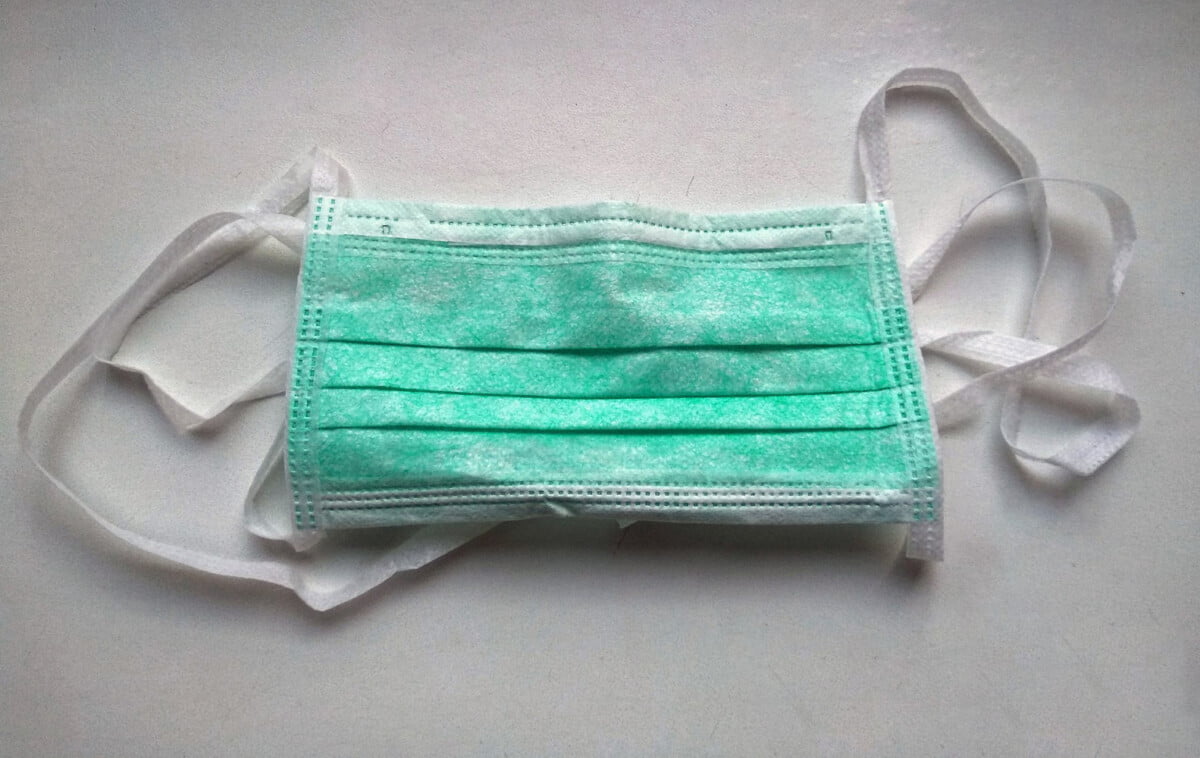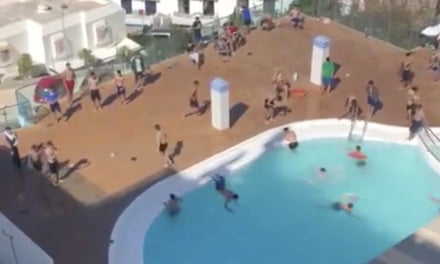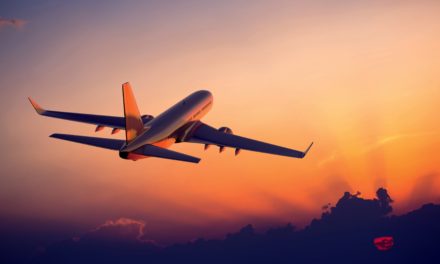 Last week the European Union Aviation Safety Agency (EASA) and European Centre for Disease Prevention and Control (ECDC) issued a joint guidance document defining approved measures to help assure the health safety of air travellers and aviation personnel, once airlines resume regular flight schedules following the severe disruption caused by COVID-19.
Last week the European Union Aviation Safety Agency (EASA) and European Centre for Disease Prevention and Control (ECDC) issued a joint guidance document defining approved measures to help assure the health safety of air travellers and aviation personnel, once airlines resume regular flight schedules following the severe disruption caused by COVID-19.
While Gran Canaria and The Canary Islands have seen some of the lowest infection rates, and perhaps the least fatalities, throughout Spain and the wider continent, the regional government have expressed concern about rushing too quickly to welcome tourists back until safety protocols have been properly established. Eager to promote its health and safety credentials in the face of so many unknowns, The Canary Islands’ Government are working closely with the United Nations’ World Travel Organisation (UNWTO) to be the first destination in the world to trial a new travel app on flights scheduled for around the middle of July.
Primarily due to there being insufficient data available as to the human body’s immune response to COVID-19
“Testing passengers in order to allow travelling/flying under “immunity passports” is not supported by the current scientific knowledge that exists on the immunological response to SARS-CoV-2 (quality, quantity and duration of human antibodies) or the available testing methods (laboratory based and point-of-care). Nevertheless, EASA and ECDC are monitoring the scientific developments and will update their recommendation as appropriate if a suitable test becomes available.“
While the paper points out that temperature checks have not yet been shown to have any real or direct influence on the number of detected COVID-19 infections carried by passengers, due to the potential for asymptomatic carriers, as well as the known accuracy of the tests, producing up to 20% false positives and false negatives, they do say that the presence of temperature checks may act as a deterrent to people with symptoms attempting to fly despite having symptoms. The document says they should be used particularly when “national policy recommends implementing thermal screening (temperature checks) due to national response plan regulations”
Due to air filtering systems, routinely used on aircraft, the risk of infection in flight is seen as very low, however the surfaces touched by passengers could be seen as a potential vector. Aeroplane operators are specifically advised to provide guidance material to passengers regarding the application of all preventive measures on board, including:
The guidance highlights the need for extra vigilance from airport and flight staff, particularly when faced with passengers who appear to be presenting known symptoms in-line with those for corona virus infections. Passengers need to be isolated away from the others and advised to follow all safety protocols to help ensure the health of other travellers. It points out that there is a great potential for some passengers, even without symptoms or adequate reasons, to become difficult to deal with:
“Extra attention needs to be devoted to the prevention and treatment of unruly passengers in the context of the pressures imposed by the pandemic. This should consider multi-layered actions starting with passenger information and preparation about the measures in place, and giving attention to the procedures and crew actions necessary to mitigate this risk.”
“These recommended measures” says the document in its introduction “are to be regularly evaluated and updated, in line with changes in knowledge about the risk of transmission, as well as with development of other diagnostic or preventive measures (including technological) and the evolution of the pandemic itself. Preventive measures are expected to be gradually reduced over time in line with a reduction of the risk level.
Health Certificates, or “Immunity Passports”, are not currently supported
 Thermal screening at airports does little to diminish the importation of infections
Thermal screening at airports does little to diminish the importation of infectionsNo cases have yet been found of COVID-19 transmission on board an aircraft.
 Passengers showing symptoms, or reacting badly to others, need to be well managed due to the potential inflight risks
Passengers showing symptoms, or reacting badly to others, need to be well managed due to the potential inflight risks
 The guidelines place paramount importance on health safety at every stage of the end-to-end passenger journey. Recognising that airports, airlines and aircraft are different, it takes a pragmatic approach in implementation – highlighting and giving guidance on the ways in which individual locations and situations can best be re-engineered to meet the new health safety standards.
The guidelines place paramount importance on health safety at every stage of the end-to-end passenger journey. Recognising that airports, airlines and aircraft are different, it takes a pragmatic approach in implementation – highlighting and giving guidance on the ways in which individual locations and situations can best be re-engineered to meet the new health safety standards.
Some overarching principles apply throughout:
- observe physical distancing wherever possible
- wear a medical face mask to protect other passengers
- and practice scrupulous and frequent hand hygiene.
Air passengers and general population are to be reassured that filtered air on airplanes is safer and cleaner than the air many of us breathe on the ground.
The EASA and ECDC guidelines are part of a wider European Commission package of measures to prompt the safe restoration of transport services and connectivity following the outbreak of COVID-19.
“The safety of passengers and crews has always been paramount in aviation,” European Commissioner for Transport Adina Valean said on Wednesday. “Passengers have to have confidence that taking to the skies again in a confined space with other people poses a minimum possible risk to their health. We relied on our specialists from the EASA and ECDC to define a set of concrete measures for the safe resumption of air travel within the EU. The protocol released today will reassure passengers that it is safe for them to fly and so help the industry recover from the effects of this pandemic.”
The guidance examines each phase of the passenger journey, and specifies the actions that need to be taken or measures put in place in six travel segments:
- Before arrival at the airport
- The departure terminal
- Boarding, in flight
- In transit
- Arrival at the final destination
- Safety of flight crew members
“The assurance of health safety is a critical factor for the resumption of commercial air travel,” said EASA Executive Director Patrick Ky. “This protocol is the blueprint for safe air travel, from the moment of arrival at the departure airport right through to leaving the airport at the destination.”
“This is the start, rather than the end, of a process to make air travel as safe as possible from the health perspective, in addition to the technical safety which has until now been the main focus of EASA. The next task is for airlines and airport operators to adapt the guidelines to their individual facilities and operations. EASA and ECDC will continue to offer their expertise in this crucial phase.”
ECDC Director Andrea Ammon said: “This joint work will provide a source of best practice on how airport operators, airlines and national aviation authorities can reduce the risk of virus transmission for passengers as well as the staff and crew who serve them whilst maintaining safe and secure operations”.
The guidelines are based on both agencies’ scientific expertise and reflects the best scientific knowledge currently available. ECDC is continuously monitoring the situation of COVID-19 and will update the guidelines as new epidemiological information, testing and treatment modalities become available.
Passengers expected to take personal responsibility
 Passengers themselves are also expected to take personal responsibility. For example, passengers who have COVID-19 compatible symptoms (fever, cough, sudden loss of smell, shortness of breath) or who are aware that they have come in contact with a COVID-19 case should not arrive at the airport or should postpone their travel to protect their fellow passengers.
Passengers themselves are also expected to take personal responsibility. For example, passengers who have COVID-19 compatible symptoms (fever, cough, sudden loss of smell, shortness of breath) or who are aware that they have come in contact with a COVID-19 case should not arrive at the airport or should postpone their travel to protect their fellow passengers.
Passengers are recommended to practice distancing, hand hygiene, respiratory etiquette, and use medical face masks, and to declare their COVID-19-related status before receiving their boarding pass. Passengers will also be asked to provide contact information to allow for “track and trace” if someone on a particular flight later tests positive for COVID-19.
Those not travelling will need to say goodbye to the passenger before they enter the terminal building, except in defined special cases.
For aircraft and airport operators, significant changes will be required to their processes. The protocol states: “Aeroplane operators and airport operators should cooperate to ensure physical distancing is respected wherever feasible, especially during check-in, security check, pre-boarding and boarding. When the recommended physical distancing of 1.5 metres is not possible, due to infrastructure or operational constraints, aeroplane operators and airport operators should implement the additional risk mitigation measures such as hand hygiene, respiratory etiquette, additional transport, etc.”
 On the aircraft, the guidelines offer some flexibility due to the constrained space, but are clear that wherever possible passengers should be physically distanced: “In addition to the other health and hygiene measures that must be observed at all times, where allowed by the passenger load, cabin configuration and mass and balance requirements, aeroplane operators should ensure, to the extent possible, physical distancing among passengers.”
On the aircraft, the guidelines offer some flexibility due to the constrained space, but are clear that wherever possible passengers should be physically distanced: “In addition to the other health and hygiene measures that must be observed at all times, where allowed by the passenger load, cabin configuration and mass and balance requirements, aeroplane operators should ensure, to the extent possible, physical distancing among passengers.”
These recommended measures will be regularly evaluated and updated in line with changes in knowledge about the risk of transmission as well as with development of other diagnostic or preventive measures (including technological) and the evolution of the pandemic. – Wear medical face masks, ensure their correct use and disposal, and replace every 4 hours (unless instructions say otherwise)
– Observe physical distancing (1.5 metres)
– Wash hands regularly for at least 20 secs with soap and water or, where not available, use alcohol-based hand sanitising solutions
– Cover the mouth and nose with a tissue or flexed elbow when sneezing or coughing
– Limit direct contact with surfaces and people
– Be kind to each other – it’s the only way we will get through this
– Complete the Notification of Health status from your airline
– Don’t travel to the airport if you have been in any of the situation specified in the Notification of Health status
– Be aware that only travellers should enter the airport terminal at arrival and departure. (The only other people who should enter the terminal are people accompanying or picking up a passenger requiring assistance – Persons with Reduced Mobility or unaccompanied minors)
– Read the health safety promotion material from your airline
– Check you have sufficient medical face masks and sanitising gel for your journey
– Ensure you leave enough time for your journey including checks at the airport
– Ask a member of staff in case you have any questions or feel uneasy (they are there to help you in this new situation)
– Be prepared for thermal screening at the airport
– Observe physical barriers or signs indicating distancing requirements
– Check-in your bag whenever possible
– Minimise your use of airport facilities
– Wear a face mask, and expect to be denied boarding if you do not wear one
– Ask the cabin crew if you have any questions or feel uneasy (they are there to help you in this new situation) and be nice to them.
– Watch the cabin safety demonstration so you know what is happening on your flight.
– Reduce the use of individual air supply nozzles as far as possibleGeneral messages:
Before leaving for the airport:
At the airport:
On the aircraft:
 Read the Full Guidance document here
Read the Full Guidance document here
You can find more information on the latest EASA guidance by visiting their website https://www.easa.europa.eu/ and from the European Centre for Disease Control at https://ecdc.europa.eu










Thanks for sharing this